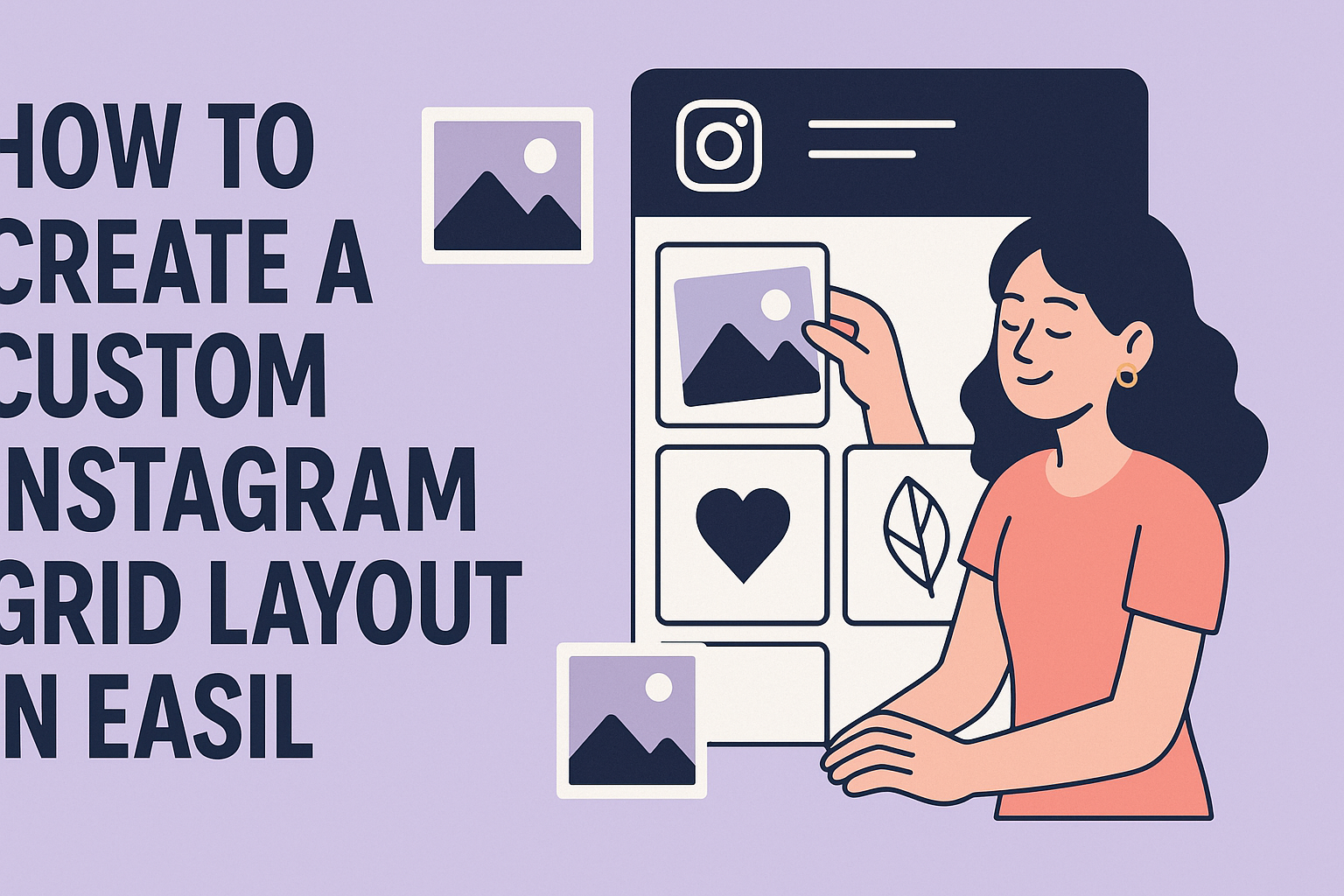Creating a custom Instagram grid layout can elevate any profile and make a lasting impression.
Using Easil, anyone can design a visually appealing layout that showcases their brand while attracting more followers.
With the right tools and creative ideas, it becomes easy to transform a simple feed into a cohesive gallery.
For many, Instagram is not just a social media platform but a vital marketing tool. By mastering layout creation, individuals can highlight their content in unique ways that stand out in crowded feeds.
This article will guide readers through the steps to design that perfect grid layout with Easil, ensuring each post contributes to the overall aesthetic.
Whether someone is a small business owner, content creator, or influencer, a custom grid can help tell their story effectively. Delving into layout strategies can lead to greater engagement and connection with their audience.
By following the tips in this article, readers will be well-equipped to create a stunning Instagram presence.
Getting Started with Your Instagram Grid
Creating an Instagram grid layout is fun and can greatly impact how others view a profile.
Starting with a clear understanding of grid layouts and setting specific goals can help create a cohesive and visually appealing feed.
Understanding Grid Layouts
A grid layout refers to the arrangement of posts on an Instagram profile.
There are several styles to consider, including checkerboard, row-by-row, and other creative patterns. Each layout serves a purpose and can convey a brand’s message.
For example, a checkerboard pattern alternates between images and quotes. This can engage followers by providing visual interest. A row-by-row layout involves posting series of related content in horizontal lines, making it easy for followers to see themes.
Choosing a layout helps maintain consistency. This consistency builds a recognizable brand identity, encouraging more engagement from users.
Setting Goals for Your Grid
Before diving into design, it’s important to set goals for what the Instagram grid should achieve.
Goals could include increasing engagement, showcasing products, or promoting a lifestyle.
By outlining these objectives, it becomes easier to plan content.
For instance, if the goal is to showcase products, the grid can feature high-quality images that highlight those items.
Another goal may focus on storytelling. In this case, each post can represent a chapter or part of a narrative, captivating viewers and encouraging them to follow along.
Using a planning tool like Easil allows users to visualize the grid before posting. This ensures all content aligns with the set goals.
Designing Your Instagram Grid in Easil
Creating a custom Instagram grid in Easil involves careful planning and design choices.
By focusing on the right theme, using templates, and making custom graphics, anyone can enhance their grid’s visual appeal.
Choosing a Theme and Color Scheme
The first step in designing an Instagram grid is selecting a theme. This could be based on personal brand values, aesthetics, or the type of content shared.
Next, a cohesive color scheme is essential. It helps create a unified look across the feed.
Users should consider using complementary colors or a specific palette that reflects their brand identity. Tools like Adobe Color or Canva’s color palette generator can assist in this process.
Finally, consistency is key. Sticking to the chosen theme and colors for each post will keep the grid visually appealing. This approach not only grabs attention but also builds brand recognition over time.
Using Templates for Consistency
Easil offers a variety of templates that simplify the design process. These pre-made layouts ensure users maintain a consistent look across their Instagram grid.
Choosing a template that aligns with the selected theme can save time. Users can easily edit text, images, and colors to fit their style. This approach allows them to focus on content without worrying about design details.
Many templates are also designed for a specific grid layout, like a puzzle or checkerboard style. Using these templates can enhance the overall flow of posts. Regularly updating the grid with new templates helps keep the feed fresh while maintaining a consistent aesthetic.
Creating Custom Graphics and Elements
Custom graphics can greatly enhance an Instagram grid’s uniqueness. Easil provides tools for creating eye-catching visuals, like posters or icons that can be used in posts.
Users can start with a blank canvas or customize existing designs. Adding personal touches, such as logos or unique images, helps establish a brand identity.
Graphics should be clear and relevant to the content shared. Incorporating text elements, like quotes or calls to action, can increase engagement. Using a mix of graphics and images keeps the feed dynamic and interesting for followers.
Scheduling and Publishing Your Grid
Creating a custom Instagram grid layout is an important step, but scheduling and publishing the posts efficiently can make all the difference.
Organizing posts and choosing the right times to share them ensures engagement and consistency.
Organizing Posts with Drag-and-Drop
Using a drag-and-drop feature makes organizing Instagram posts very simple. This method allows users to easily adjust the order of images and texts to create a cohesive look for the grid.
With this feature, a user can visually manage how each post will appear on their profile. They can move posts around until the desired arrangement is achieved.
Most scheduling tools, like Easil, offer this feature, making planning straightforward. Visually seeing the grid layout helps users maintain their intended aesthetic while ensuring that the branding and messaging remain strong across every post.
Best Times to Post on Instagram
Timing plays a crucial role in engagement on Instagram.
Users should consider posting during peak activity times to reach a wider audience.
Research shows that certain days and times generally result in higher engagement. For example:
- Monday to Friday: 10 AM – 12 PM tends to be optimal.
- Evenings: 7 PM – 9 PM can also see spikes in activity.
Utilizing insights from Instagram analytics can help users identify when their followers are most active.
Adjusting the posting schedule based on these metrics increases the likelihood of successful interactions.

